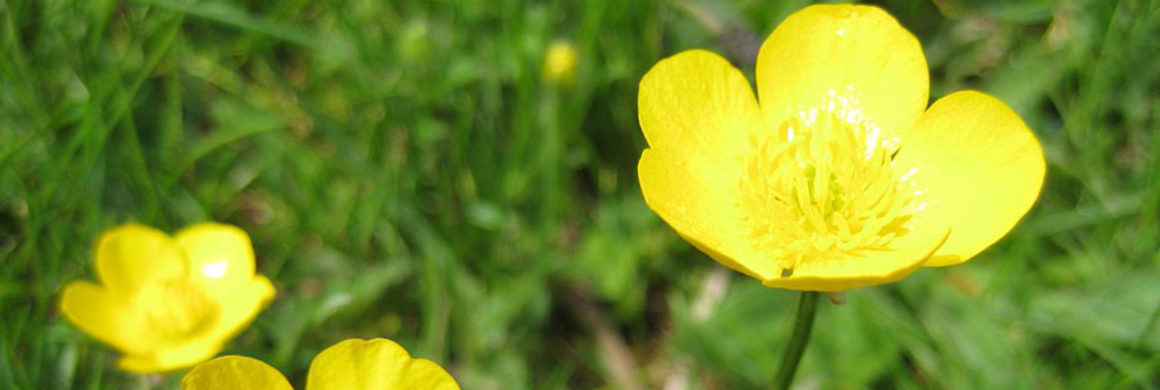They’re a delight in the calendar photograph: a wide-eyed foal gazing at the camera, a golden bed of buttercups peeking through the green grass at his hooves. But buttercups and horses don’t go together at all. In fact, these beautiful flowers grow from toxic stems. Like quite a few other wildflower species which flourish in natural grasslands (and overgrazed pastures), buttercups are poisonous to horses.
Buttercups (also called bachelor’s buttons or butter daisies), are not typically eaten by a well-fed horse. They just don’t taste very nice. But buttercups tend to grow in overgrazed, weedy pastures, which is exactly the sort of place where a horse will be less choosy about their forage. Out of boredom or out of hunger, a horse might make bad choices while browsing through weeds.
Buttercup toxicity is caused by a toxic oil in the plant’s leaves and stems, which can cause blisters, excessive salivation, and gastrointestinal upset. The upside to all this is that toxicity from protoanemonin, the guilty substance, can be treated with fluids and analgesics, and that only fresh buttercups are dangerous. Cut and dried into hay, the flowers are harmless.
If you spot buttercups in your pasture, you might not need to panic. After all, we already know they taste terrible and most horses won’t touch them. Most horses won’t bother toxic plants unless they have a very good reason: either they’re undernourished, they don’t have a good forage source to keep them busy (i.e. a hay source), or their forage source is grazing, but there’s no actual grass. Consider your horse’s individual circumstances–do you have a horse in rehabilitation who needs condition? A horse who tends to eat everything in sight? If so, look for a buttercup solution.
Your local extension office or feed store can put you on the right course for your farm, whether it’s reseeding your pasture or using a safe herbicide to eradicate the poisonous plants.
Keep in mind that the best way to keep toxic plants out of your pastures is through a combination of careful pasture management and healthy animal maintenance. Weeds and wildflowers prefer disturbed land to healthy grasslands. Horses on a balanced diet with plenty of forage throughout the day and night are less likely to nose through plants they shouldn’t be eating. With this combination, you can keep prevent poison problems before they show up, yellow and inviting, in your pasture.


